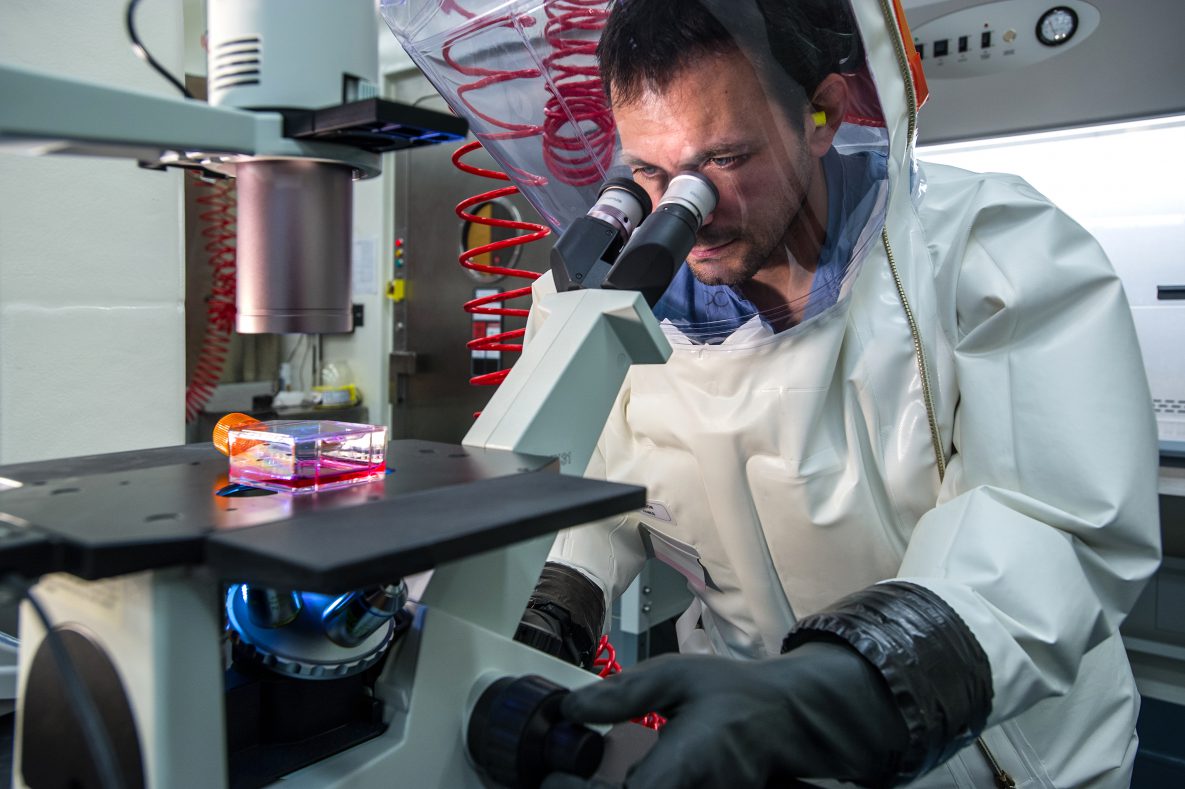Diseases Caused by High-Consequence Viruses

The viruses we study are zoonotic, meaning they naturally occur in animal or insect populations in the environment. People become infected with these viruses when they encounter an infected animal or insect, or their body fluids. After infecting one person, many of these viruses can continue to spread from person-to-person.
Most high-consequence viral pathogens are classified as Biosafety Level 4 (BSL-4) pathogens, meaning they must be worked on in special laboratory facilities with the highest level of safety measures. We operate a BSL-4 laboratory which is designed with specific precautions and controls to contain dangerous BSL-4 pathogens.
Viral Hemorrhagic Fevers
Viral hemorrhagic fevers (VHFs) are a group of diseases caused by several distinct families of viruses. Some VHFs cause relatively mild illness, while many others cause severe, life-threatening disease with no known cure, like Ebola. Most of the diseases we study are VHFs that are classified as BSL-4 pathogens. These are listed below, grouped by virus family. Find information on other VHFs on the VHF website.
Arenaviridae
- Chapare Hemorrhagic Fever (CHHF)
- Lassa Fever
- Lujo Hemorrhagic Fever (LUHF)
- Lymphocytic Choriomeningitis (LCM)
Nairoviridae
Hantaviridae
Phenuiviridae
Filoviridae
Flaviviridae
Paramyxoviruses
Paramyxoviruses cause sudden onset of respiratory diseases and usually spread through the air. While there are many more viruses included within the Paramyxoviridae family, we study these two viruses because they require a BSL-4 lab and they are highly pathogenic, zoonotic, and have no vaccine or treatment currently available.